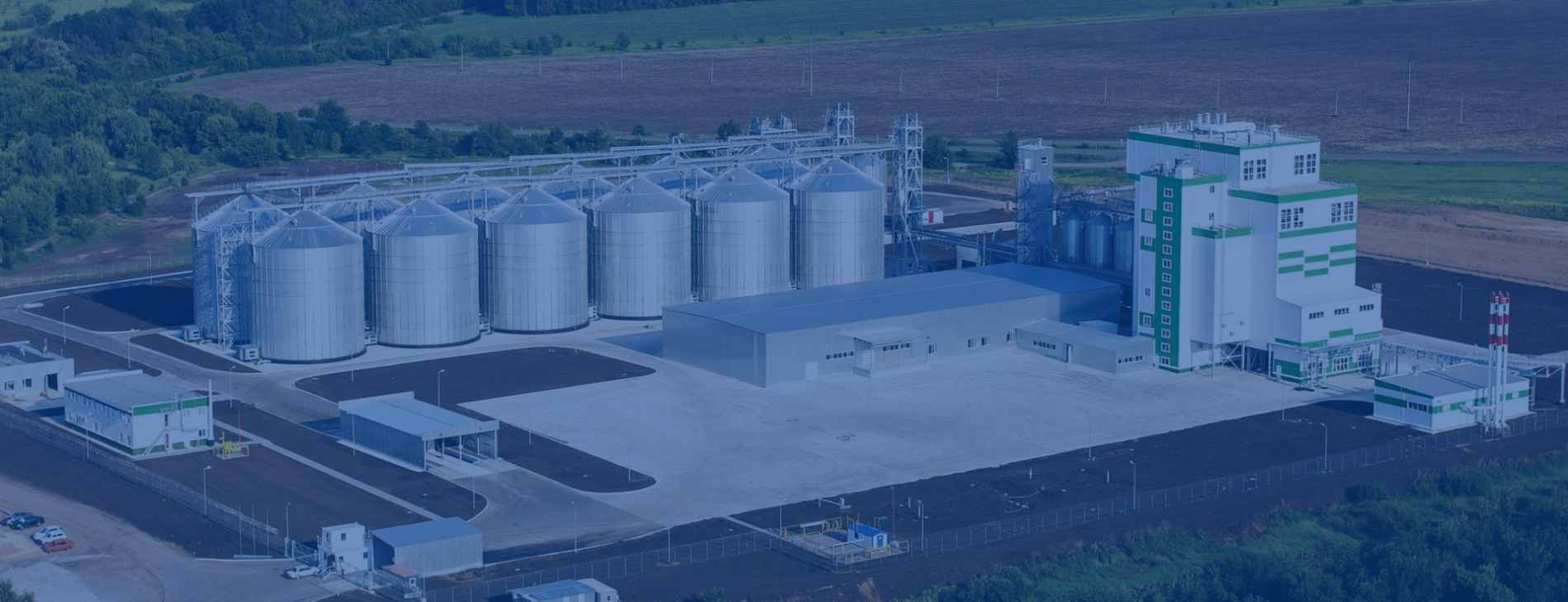
Ring Die Pellet Machine
Ring die pellet machine is well known for its high efficiency, low energy consumption, easy operation and low maintenance cost. It is widely used in the production of feed, biomass fuel and organic fertilizer, playing a vital role in large-scale pelleting production lines. Existing models include feed pellet mill, biomass pellet mill, wood pellet mill, organic fertilizer pellet mill, and even cat litter pelleting solutions.

What is a ring die pellet machine?
— Richi Machinery —
Before we understand what a ring die pellet machine is, let’s first look at how a vertical ring die pellet mill performs in actual application. In the video “US Customer Test of Corncob Vertical Ring Die Pellet Machine,” you will see RICHI Machinery conduct an on-site test of a vertical pellet machine ring die using corncobs as the raw material. This demonstration not only showcased the machine’s stability and efficiency, but also highlighted its ability to handle fibrous, difficult-to-form materials – exactly the performance our international customers expect. So what exactly is a ring die pellet mill? Let’s take a look.
A ring die pellet feed machine is a highly efficient pelletizing equipment specially used to press powdered raw materials into cylindrical pellets. It is also the most widely used model in the pellet processing industry. It is widely used in the production of pellet products such as animal feed, biomass energy, organic fertilizer, cat litter, etc. It is the core machinery for realizing large-scale and automated pellet manufacturing.
The ring die pellet mill extrude the uniformly mixed materials under high pressure through the cooperation of the ring die and the rotating roller. Compared with other types of pelletizing equipment, the ring die pellet mill has significant advantages in output, energy consumption, durability and adaptability to different materials. It is a key component in medium and large production lines.
1-45
Production Capacity (T/H)
22-355
Power (KW)
A standard ring die pellet mill usually consists of the following six parts, each of which plays an important role in the pelletizing process:
Feeding system
After the raw materials enter from the feed port, they are evenly transported to the pelletizing area through the feeder. The system is equipped with a pressure regulating device, which can flexibly adjust the feeding speed and pressure according to the material characteristics and production needs, thereby affecting the pellet density and molding effect.
Conditioner (optional configuration)
It is used for pretreatment of feed or organic fertilizer raw materials. The raw materials are heated and softened by steam or water to make them more suitable for subsequent pressing, and to improve the compactness and nutrient retention rate of the pellets. The conditioner is particularly important for producing high-quality feed pellets.
Compression device
This is a key system that drives the ring die to operate and press and form. It consists of a main shaft, gears, reducers and bearings, etc., which is responsible for converting the power from the motor into a stable rotational force, driving the ring die and the pressure roller to form a high-pressure extrusion area, and pressing the raw materials into the die hole for molding.
Ring die system
The ring die is the core component of pellet forming. Its inner wall is provided with a large number of die holes. The raw materials are squeezed into these holes under high pressure to form pellets. The aperture size, material and wear-resistant treatment of the ring die will directly affect the specifications, appearance and production efficiency of the pellets.
Press roller assembly
The press roller works with the ring die and is the direct power source for the raw materials to enter the die hole under pressure. Its structure includes components such as the press roller shaft and bushing, which have good wear resistance and pressure bearing capacity, ensuring long-term stable operation and adapting to various raw material characteristics.
Cutting and discharging system
After the pellets are extruded from the die hole, they are cut into the required length by the cutter in time and discharged through the discharging port. The discharging system operates stably and the cutting length is adjustable to ensure that the pellets are neat and consistent, which is convenient for packaging and subsequent processing.
how does a pellet machine work
The working principle of ring die pellet machine is actually very intuitive. Simply put, it is to press the powdered raw materials into a circular ring mold with holes through high pressure, then extrude it, and finally cut it into pieces of pellets.
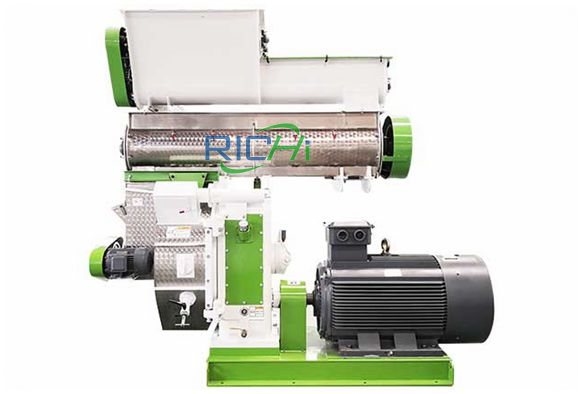
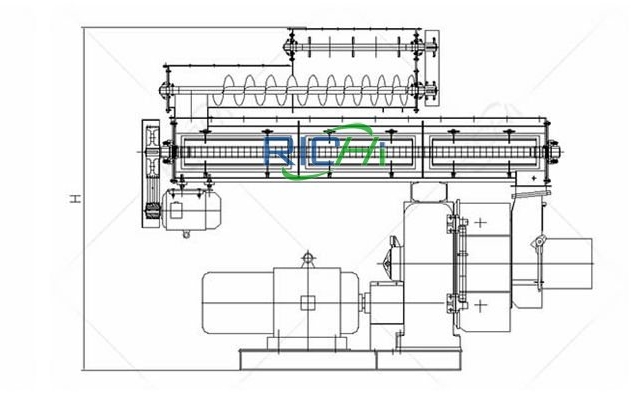
After the equipment is started, the motor runs under the control of the frequency converter, and transmits power to the main shaft through the transmission belt. The main shaft drives the ring die fixed on it to rotate together, and a high-pressure area is formed between the inner wall of the ring die and the pressure roller inside. The raw materials that have been tempered in advance enter from the feeding port and are fed between the ring die and the pressure roller.
During the rotation of the ring die, the pressure roller continuously presses the raw materials against the die so that it is squeezed into the die hole. Through this extrusion process, the raw materials are compacted, formed, and extruded from the die hole to form a continuous columnar material. Then, the cutter on the outer edge of the ring die cuts these columnar materials into pieces of pellets, which are finally discharged from the discharge port.
It is worth noting that when the main shaft torque is too large due to material blockage or hard raw materials, the transmission belt will automatically slip to avoid damage to the motor and key components, thus improving the safety and stability of the whole machine.
Different types of ring die pellet machines have slightly different structures. For example, animal feed pellet mills usually add a conditioning step before feeding to preheat and mature the raw materials, which is more conducive to pressing and nutrient absorption; while wood chips, biomass pellets, etc. usually do not require this step.
In general, the ring die feed pellet mill is a process of using mechanical pressure to press various powdery or fibrous materials into regular pellets. It works stably and efficiently, and is one of the most core equipment in modern pellet processing.
Contact Us
RICHI MACHINE
Classification of Ring Die Pellet Machine
Ring die pellet machine is a highly efficient and continuously operated pelletizing equipment, which is widely used in the pelletizing of various raw materials. It has a compact structure, high output and good molding, and is one of the core equipment of medium and large feed pellet production lines.
According to the different processing raw materials, ring die feed pellet machine can be divided into the following types:
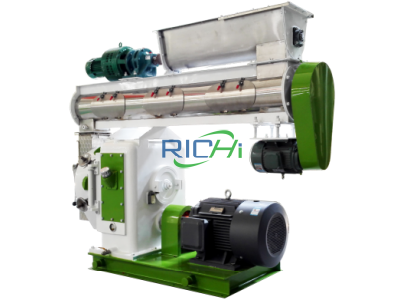
Ring Die animal feed pellet Machine
Animal feed pellet press is specially designed for producing feed pellets for livestock and poultry. It ensures uniform nutrition distribution, improves feed digestibility, and supports intensive farming development.
Applicable Objects: Pigs, chickens, ducks, cattle, sheep, rabbits, etc.
Raw Material Range: Corn, soybean meal, rice bran, grass powder, alfalfa, etc.
Application Scenarios: Livestock and poultry feed mills, animal husbandry farms, integrated breeding bases
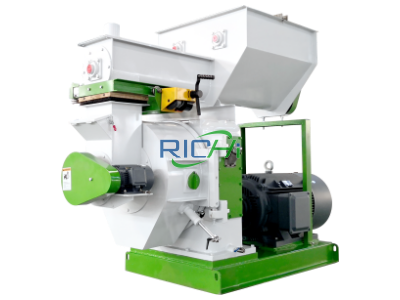
Ring Die Biomass Pellet Machine
Biomass pellet machine is used to convert agricultural residues and biomass waste into clean-burning fuel pellets, promoting energy recycling and reducing environmental impact.
Applicable Raw Materials: Straw, rice husks, corn cobs, palm shells, coconut shells, peanut shells, etc.
Application Scenarios: Biomass fuel processing plants, boiler fuel stations, biomass power plants, central heating projects
Output Products: Biomass fuel pellets, suitable for combustion and energy generation
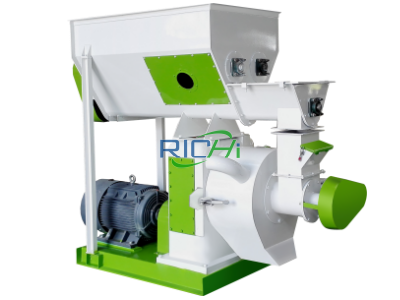
Ring Die wood chip pellet machine
Wood chip pellet machine is mainly used for processing wood waste into high-density wood pellets, suitable for heating, combustion, and biomass energy production.
Applicable Raw Materials: Sawdust, wood shavings, bark, log scraps, furniture factory scraps, etc.
Application Scenarios: Wood processing plants, furniture factory waste treatment, biomass pellet export projects
Output Products: Premium wood pellets for fuel or export
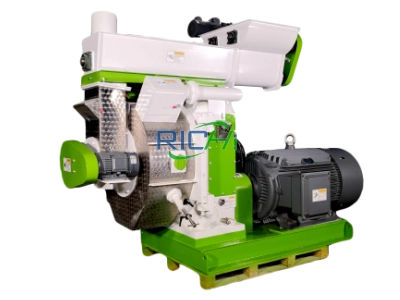
Ring Die Organic Fertilizer Pellet Machine
Organic fertilizer pellet machine transforms organic waste into high-value fertilizer pellets, supporting sustainable agriculture and ecological waste treatment.
Applicable Raw Materials: Poultry and livestock manure, biogas residues, crop waste, organic kitchen waste, etc.
Application Scenarios: Organic fertilizer plants, new compound fertilizer enterprises, planting cooperatives, environmental protection centers
Output Products: Granular organic fertilizer
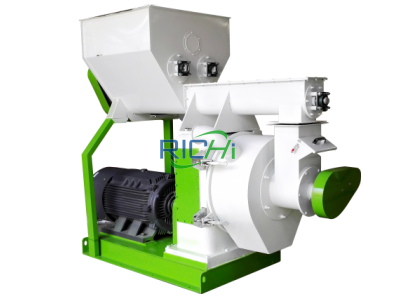
Ring Die Cat Litter Pellet Machine
Cat litter pellet machine is developed for the production of eco-friendly, biodegradable cat litter, featuring high absorption, low dust, and fast clumping properties.
Applicable Raw Materials: Tofu dregs, sawdust, corn flour, plant fiber, and other biodegradable materials
Application Scenarios: Cat litter manufacturing plants, pet products factories, e-commerce brand OEM bases
Output Products: Biodegradable cat litter pellets
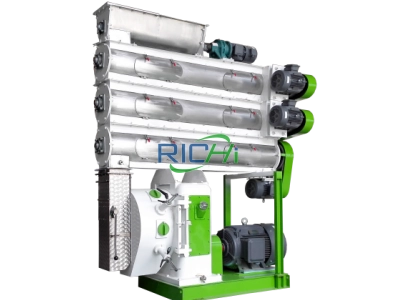
Ring Die Prawn feed pellet Machine
Prawn feed making machine is designed to produce aquatic feed pellets with precise nutrition, ensuring stable floating or sinking performance for different aquatic species.
Applicable Objects: Fish, shrimp, crab, turtle, and other aquatic animals
Raw Material Range: Corn, soybean meal, fish meal, meat meal, wheat flour, rice bran, vitamins, minerals, etc.
Application Scenarios: Aquaculture feed mills, fish farms, shrimp farms, aquatic product processing enterprises, aquatic research institutes
Whether you are engaged in feed processing or new energy, biological environmental protection and other industries, the ring die pellet machine provided by RICHI can customize efficient and stable pelleting solutions for you.
RICHI MACHINERY
Characteristics and technical parameters of ring die pellet machine
RICHI’s ring die feed pellet machine is widely used in modern feed production lines and large-scale feed processing plants. With its stable performance and advanced technology, it serves as the core equipment for livestock, poultry, and aquatic feed manufacturing.
- RICHI ring die feed pellet machine adopts internationally advanced CPM design, with reasonable structure and high efficiency, which is particularly suitable for medium and large feed processing needs.
- The whole machine is equipped with a direct drive system, which improves efficiency by about 20% and has more stable power output compared with traditional transmission methods.
- The variable frequency feeding device is used to intelligently adjust the feeding speed to ensure that the material enters the pelletizing chamber evenly and smoothly to avoid blockage and idling.
- The conditioner is a lengthened and thickened stainless steel structure with a volume expanded to 2.6 times the original, which effectively prolongs the maturation time and increases the feed conversion rate by 3%-5%.
- The supporting steam injection system is advanced in design, with more uniform steam distribution, eliminating steam back-spray, ensuring maturation effect and equipment safety.
- The main shaft adopts German deep hole gun drilling for one-time molding, smooth refueling, stable operation and more convenient maintenance.
- The box body is precisely processed by the machining center, equipped with imported high-end bearings and couplings, with low noise, long life and high precision.
- The whole machine is equipped with an overload protection system and a quick disassembly ring die structure, which makes mold replacement convenient and safe and efficient.
- It supports customized double-layer or three-layer conditioning configuration, which can meet the process requirements of different livestock and poultry and aquatic feeds and has stronger adaptability.
- The equipment is made of all stainless steel and modular design, and is the core pelleting equipment for stable and high-yield modern feed factories.
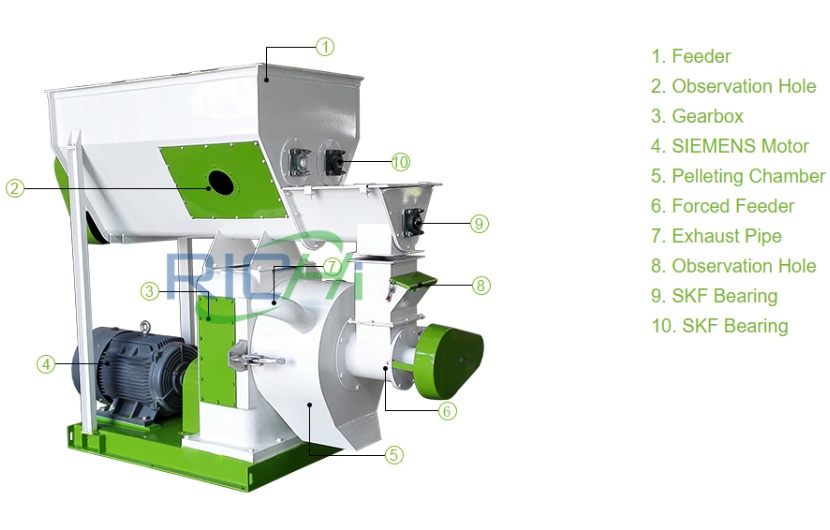
Here are common ring die pellet machine models with their production capacities, and power ratings:
| Model Type | Production Capacity Range (T/H) | Power (KW) |
| SZLH-250 | 1~2 | 22 |
| SZLH-320 | 3~4 | 37 |
| SZLH-350 | 5~7 | 55 |
| SZLH-420 | 8~12 | 110 |
| SZLH-508 | 10~18 | 160 |
| SZLH-558 | 15~25 | 180/220 |
| SZLH-678 | 20~30 | 220/250 |
| SZLH-768 | 25~40 | 250/280 |
| SZLH-858 | 28~45 | 315/355 |
RICHI MACHINERY
Related videos of ring die pellet machine
As a world-leading pelletizing equipment manufacturer, RICHI Machinery has always focused on providing efficient, stable and customized pellet production solutions for different industries. In feed, wood chips, aquaculture, biomass and other fields, RICHI’s ring die pellet machine is not only the core equipment of the production line, but also the key to ensure product quality and output capacity.
The following video shows RICHI’s application examples in many countries and projects, and fully presents the actual application and operation effect of the pellet machine ring die in large-scale production lines and modern processing plants, helping you to more intuitively understand our equipment strength and project experience.
Analysis of the pelletizing process of the ring die pellet machine
The ring die pellet machine is the core equipment of the pellet production line, and its pelletizing process is mainly completed in the pelletizing chamber. The pelletizing chamber is composed of key components such as the ring die, pressure roller, feed scraper and cutting device. Through precise matching, the loose raw materials are pressed into dense pellets. The following is a detailed description of the common pelletizing process of this equipment:
First, the raw materials after crushing and drying will enter the pelletizer through the feeding system at the top of the equipment. Under the action of the die sleeve and the feed scraper, the raw materials are evenly introduced into the two pelletizing areas to ensure reasonable material distribution.
When the machine starts, the driving wheel on the hollow shaft drives the ring die to rotate at high speed, and the material that has entered the pelletizing area will be sucked into the sandwich area between the ring die and the pressure roller.
Here, the raw materials are constantly squeezed and rubbed between the ring die and the pressure roller, and are gradually softened and reshaped. Under the continuous high pressure, the material is forced into the die hole of the ring die, and is extruded from the die hole after forming.
After the pellets are extruded from the die hole, they will be cut into the required length by the cutter device to form standardized cylindrical pellets, and finally discharged smoothly from the discharge port.
The entire pelletizing process is efficient and continuous, with uniform pellet density and smooth appearance, which is suitable for pellet processing needs in various industries such as wood chips, biomass, feed, and organic fertilizer.
RICHI MACHINERY
Related project cases of ring die pellet machine
As a leading manufacturer in the pelleting machinery industry, RICHI Machinery offers highly customizable ring die pellet machines to meet the needs of different industries and production capacities. From small farms to industrial-scale pellet mills, we design efficient and economical pelleting systems to optimize yields and minimize waste.
Trusted in more than 150 countries, our ring die pellet mills are widely used in animal feed production lines (poultry, cattle, fish), biomass energy projects, organic fertilizer plants and pet care product production. With advanced engineering design, global service and proven performance, RICHI helps you fully control your inputs and make the best results with every pellet.
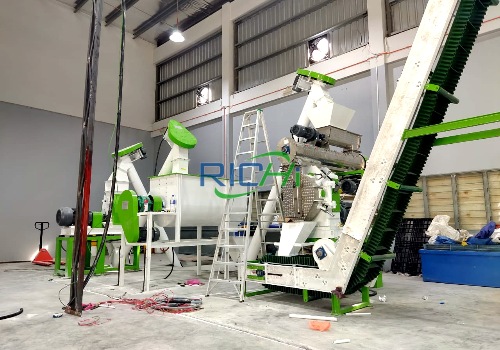
German ring die animal feed processing plant project (5 T/H)
- Project time: March 2025
- Project address: Lower Saxony, Germany
- Project type: poultry and ruminant compound feed pelletizing line
- Configuration highlights: equipped with a double-layer conditioning system, a single ring die pellet machine has a capacity of 5T/H, and a total of 2 main machines are configured

Project Advantages
High degree of automation, feed pellet forming rate exceeds 98%, widely used in local large farm groups
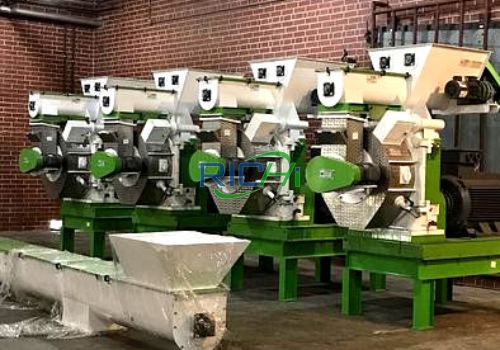
Canadian ring die wood chip pellet export project (10 T/H)
- Project time: November 2022
- Project address: British Columbia, Canada
- Project type: export-oriented wood chip fuel pellet processing plant
- Configuration highlights: 4 ring die wood chip pellet machines, equipped with fully automatic screening, cooling and packaging systems

Project Advantages
The high-density pellets produced meet EU biomass fuel standards and are mainly exported to Germany and Belgium
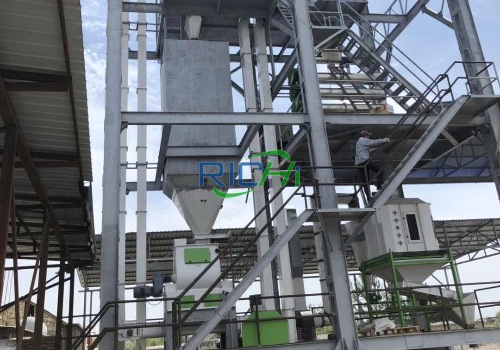
Netherlands ring die Aquatic Feed Project (6 T/H)
- Project time: March 2024
- Project Address: Port Area of Rotterdam, Netherlands
- Project Type: Dual-purpose production line for floating fish feed and sinking feed
- Configuration highlights: Ring die aquatic feed pellet machine is equipped with high temperature conditioning system, supporting 0.8-2.5mm pellet processing

Project Advantages
Meet the high-end aquaculture market, strong production line flexibility, serving the Netherlands, Benelux regional market
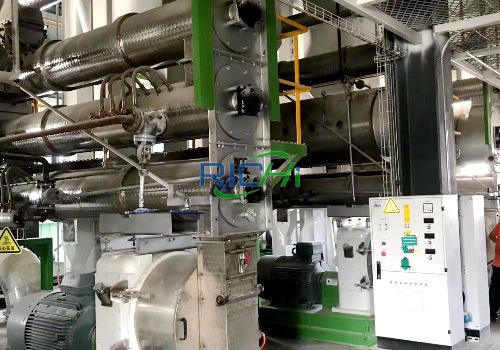
Midwest ring die Cattle Feed pellet machine (7T/H)
- Project time: April 2023
- Project Address: Kansas, USA
- Project Type: Ruminant High-Fiber Pellet Feed Production Plant
- Configuration highlights: Customized ring die structure, suitable for pelleting high crude fiber raw materials (alfalfa, corn straw)

Project Advantages
Meet the needs of large-scale ranch feeding, and the production line can run continuously for more than 20 hours
Swedish ring die sunflower meal pellet production line (5T/H)
- Project time: July 2023
- Project address: Uppsala, Sweden
- Project type: Sunflower meal is made into pellet feed for livestock farming industry
- Configuration highlights: Ring die pellet machine has wear-resistant design, suitable for complex raw materials such as bark and shavings

Project Advantages
Realize the reuse of forest resources and reduce the carbon emission costs of enterprises
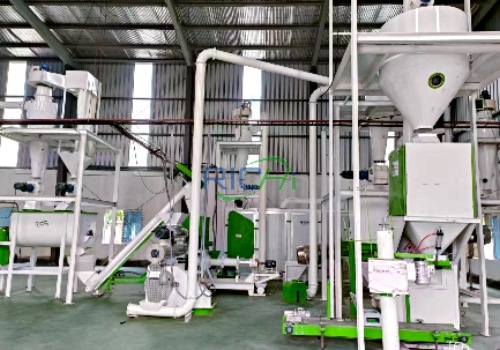
Japanese ring die aquatic + livestock and poultry feed joint production line (2-3T/H)
- Project time: October 2022
- Project address: Kumamoto Prefecture, Japan
- Project type: Dual-module feed pellet production system, supporting aquatic and livestock switching production
- Configuration highlights: One sets of ring die pellet main machines run on the same line, independent steam system control, and adapt to a variety of formulas

Project Advantages
Improve equipment utilization, annual total output reaches 60,000 tons, supplying feed markets in many regions

Frequently Asked Questions
Is there any difference between a ring die pellet machine and ordinary pelleting equipment?
This is a very common but easily confusing question. Although the working principle of the ring die feed pellet mill is similar to that of ordinary feed, wood chip and biomass pellet machines (all are roller + die extrusion molding), they have obvious differences in structural design, purpose, suitable raw materials, production capacity requirements, etc.
The ring die feed pellet machine is not the name of a specific equipment, but a type of pellet machine design with “ring die structure” as the core. The corresponding structure is the “flat die pellet machine”.
Ring die feed pellet machine: The die is ring-shaped, and the material is extruded from the inside to the outside or from the outside to the inside, which is suitable for industrial pellet production lines with medium and large output.
Flat die pellet machine: The die is flat and has low output, which is suitable for small home use or experimental use.
The impact of raw materials on the output of ring die pellet machine
In the pellet production process, the type and state of raw materials directly determine the actual output and operating stability of the ring die feed pellet machine. Even if the same model of equipment is used, different raw material conditions may lead to significant differences in production capacity. The following is an analysis of several key raw material factors and their impact on output:
1. Raw material type
Different types of raw materials have different fiber structures, compressibility and molding characteristics, which have a significant impact on output.
For example: soft raw materials (such as forage grass and rice husks) are easier to compress and have higher output per unit time; while hard raw materials (such as hard straw and coconut shells) have dense fibers and are difficult to process, so the output will be relatively low.
2. Raw material properties
Powdered raw materials with moderate fiber filament structure are conducive to the stable molding of pellets.
However, if all of them are extremely fine powders, there is a lack of support between the raw materials, which is likely to cause a decrease in molding rate, loose pellets, and even blockage of the machine; on the contrary, if the raw materials are too coarse, the load on the mold and the roller will increase, reducing production efficiency.
3. Unit weight (bulk density)
The larger the unit weight, the heavier the material under the same volume, and the pelletizing efficiency of the pellet machine is usually higher.
This is because the high bulk density raw material has a large conveying volume per unit time, and more materials effectively enter the compression zone, so the output naturally increases.
For example, when selecting equipment configuration for large production lines, the number of pellet machines and power are often matched according to the unit weight of the raw materials.
4. Raw material fineness
Appropriate fineness is conducive to steam absorption and heat conduction, which is helpful for conditioning and pellet forming.
However, the raw material cannot be too fine, otherwise it will easily affect the compactness of the pellets and the flow of the die holes; if the raw material is too coarse, it will affect the molding speed and increase equipment wear. It is generally recommended that the raw material fineness be controlled between 2-5mm.
5. Raw material moisture
Moisture is a key indicator affecting pellet quality and output.
Excessive raw material moisture will inhibit the amount of steam added and reduce the conditioning temperature, thereby affecting the softening and compression process of the raw material and causing a decrease in output.
However, too low moisture will make the pellets dry and brittle, and even affect the stable operation of the equipment. It is usually recommended to control the raw material moisture between 10%-15%.
Conditions for use of ring die pellet machine
To extend the service life of the equipment and ensure continuous operation, it is recommended that users operate the ring die pellet machine under the following standard conditions:
1. Working environment temperature: It is recommended to install it indoors. The normal working environment should be kept between 5°C and 40°C to avoid low temperature freezing or high temperature overheating affecting the performance of the equipment.
2. Power supply conditions: The voltage required for the operation of the equipment must be stable, and the fluctuation must not exceed ±5% of the rated value to prevent motor damage or abnormal operation due to unstable voltage.
3. Raw material moisture control: The moisture content of the feed should be strictly controlled below 17%. Excessive moisture will affect the compression efficiency, cause loose pellets, block the mold, and even damage the equipment.
4. Raw material pellet size requirements: To ensure smooth pelletizing, the raw material should be crushed to a pellet size of less than 5mm. Too large pellets will not only affect the molding, but also increase the wear of the roller and the mold.
5. Current monitoring and operation switch: The equipment is equipped with an ammeter and a control switch, which is convenient for the operator to observe the load status of the equipment in real time, stop and adjust in time, and prevent the expansion of faults.
RICHI MACHINERY
Why Choose RICHI Machinery
Choosing RICHI Machinery means you’ll receive not only high – quality equipment but also one – stop solutions and comprehensive service support. Here are some key reasons to choose us:

30 years of industry experience
Since its establishment in 1995, RICHI Machinery has amassed 30 years of rich experience in the design, production, and R & D of animal feed processing plant. With our profound technical accumulation and global development, we can provide our customers with reliable equipment and solutions.

Customized turnkey solutions
We offer a complete turnkey production line, covering project design, equipment manufacturing, installation and commissioning, and personnel training, according to your specific needs. Whether it’s a small farm or a large feed factory, we can tailor a suitable production plan for you.

Complete after – sales service
We have a comprehensive after – sales system, providing you with all – round services from pre – sales consultation to after – sales maintenance. This includes professional and systematic training to help you quickly master equipment operation and maintenance skills and maximize project requirements.
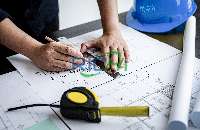
Built Around Your Needs
We can create customized turnkey pellet production line projects based on your unique requirements. For example, in this project, we provided customized technical solutions and operation training for ring die pellet machine to help the production line operate stably in the long term. You can find us on YouTube.

